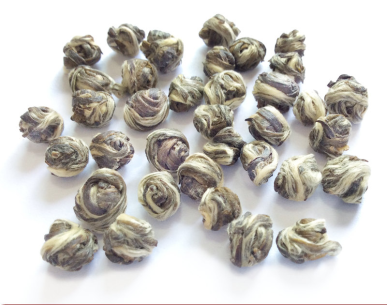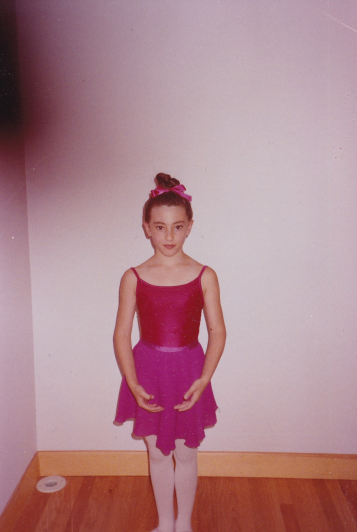 or Gunpowder tea (Chinese: 珠茶; pinyin: zhū chá; literally: “pearl tea”; pronounced [ʈʂú ʈʂʰǎ]) is a form of Chinese tea in which each leaf has been rolled into a small round pellet. Its English name comes from its resemblance to grains of gunpowder. This rolling method of shaping tea is most often applied either to dried green tea (the most commonly encountered variety outside China) or oolong tea.[1]
or Gunpowder tea (Chinese: 珠茶; pinyin: zhū chá; literally: “pearl tea”; pronounced [ʈʂú ʈʂʰǎ]) is a form of Chinese tea in which each leaf has been rolled into a small round pellet. Its English name comes from its resemblance to grains of gunpowder. This rolling method of shaping tea is most often applied either to dried green tea (the most commonly encountered variety outside China) or oolong tea.[1]
Gunpowder tea production dates back to the Tang Dynasty 618–907. It was first introduced to Taiwan in the nineteenth century. Gunpowder tea leaves are withered, steamed, rolled, and then dried. Although the individual leaves were formerly rolled by hand, today most gunpowder tea is rolled by machines (though the highest grades are still rolled by hand). Rolling renders the leaves less susceptible to physical damage and breakage and allows them to retain more of their flavor and aroma. In addition, it allows certain types of oolong teas to be aged for decades if they are cared for by being occasionally roasted.[1]
When buying gunpowder tea it is important to look for shiny pellets, which indicate that the tea is relatively fresh. Pellet size is also associated with quality, larger pellets being considered a mark of lower quality tea. High quality gunpowder tea will have small, tightly rolled pellets. [2]
VarietiesWhen sold as a variety of tea, gunpowder tea has several varieties:
- Pingshui gunpowder (平水珠茶): The original and most common variety of gunpowder tea with larger pearls, better color, and a more aromatic infusion, which is commonly sold as Temple of Heaven Gunpowder or Pinhead Gunpowder, the former, a common brand of this tea variety.[3][4]
- Formosa gunpowder: A gunpowder style tea grown in Taiwan near Keelung, it is claimed to have its own characteristic aroma, different from that of Zhejiang Provincegunpowder grown in mainland China. Formosa gunpowder teas are typically fresh or roasted oolongs.[3]
- Ceylon gunpowder: A gunpowder variant grown in Sri Lanka, usually at altitudes exceeding 1,800 metres (6,000 ft), see Green Ceylon teas.
Several types of green teas are commonly rolled into “gunpowder” form, including Chunmee, Tieguanyin, Huang Guanyin, and Dong Ding, as well as many other oolong and higher-end jasmine teas.[5]
EtymologyIn Chinese, gunpowder tea is called zhū chá (珠茶; literally “pearl tea” or “bead tea”; not to be confused with boba tea).
The origin of the English term may come from the tea’s similarity in appearance to actual gunpowder: grayish, dark pellets of irregular shape used as explosive propellant for early guns. The name may also have arisen from the fact that the grey-green leaf is tightly rolled into a tiny pellet and “explodes” into a long leaf upon being steeped in hot water. Another explanation is that the tea can also have a smoky flavor.
It is also possible that the English term may stem from the Mandarin Chinese phrase for “freshly brewed”, gāng pào de (剛泡的), which sounds like the English word “gunpowder.”[6]
Brewing methodsWhile brewing methods vary widely by tea and individual preferences, 1 teaspoon of looseleaf tea is recommended for every 150 ml (5.07 oz) of water. Ideal water temperature for this type of tea is between 70 °C (158 °F) to 80 °C (176 °F). For the first and second brewing, leaves should be steeped for around one minute. It is also recommended that the tea cup or tea pot used be rinsed with hot water prior to brewing the tea to warm the vessels. When brewed, gunpowder tea is a yellow color.[7]
The flavor of brewed gunpowder tea is often described as thick and strong like a soft honey, but with a smokey flavor and an aftertaste that is slightly coppery. This type of tea is also often seen as having a flavor that is somewhat grassy, minty, or peppery.[8]
Where is it grown?It is originally from Zhejiang Province, China and another type is grown in Taiwan
Advertisements Share this:




